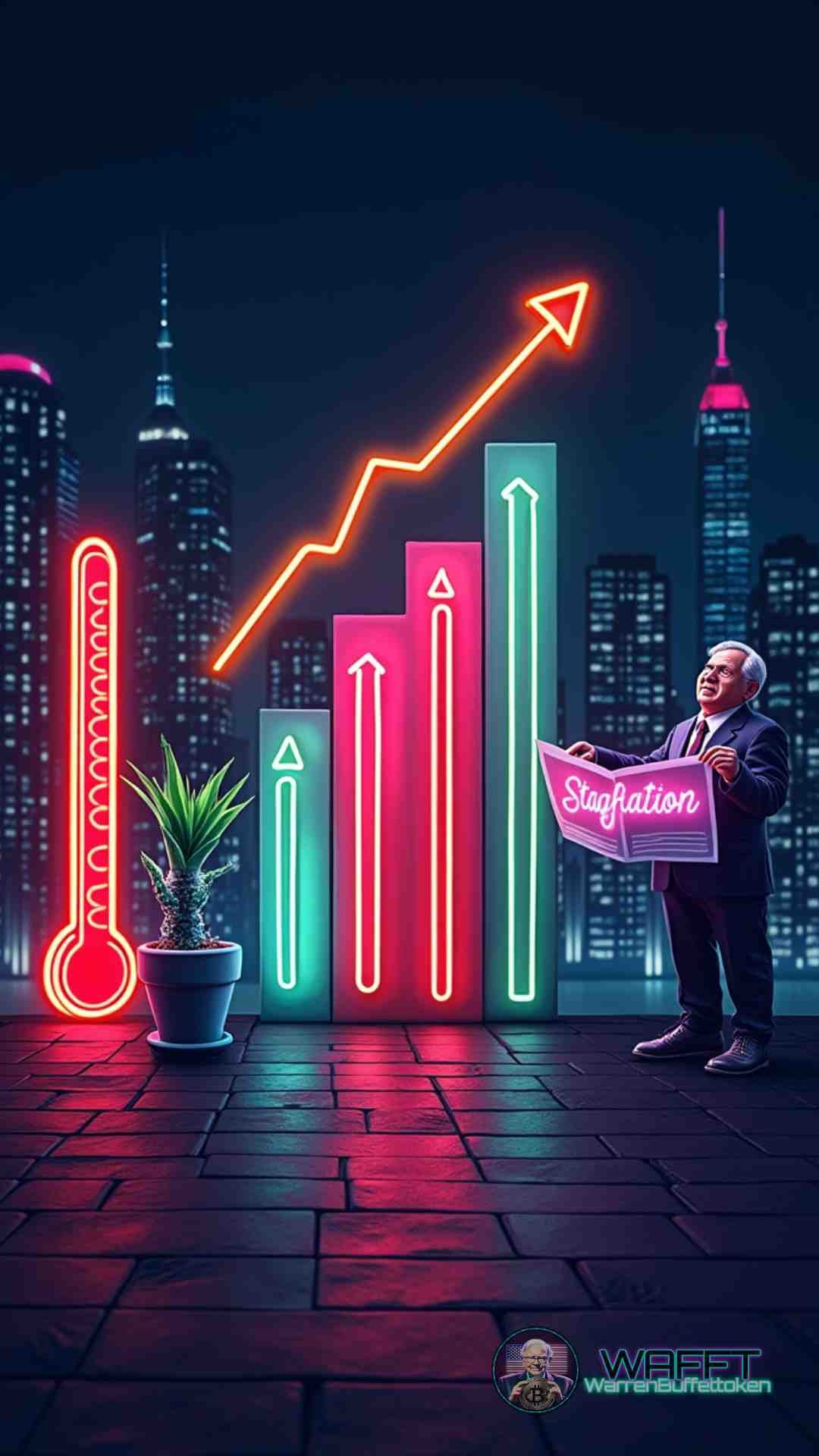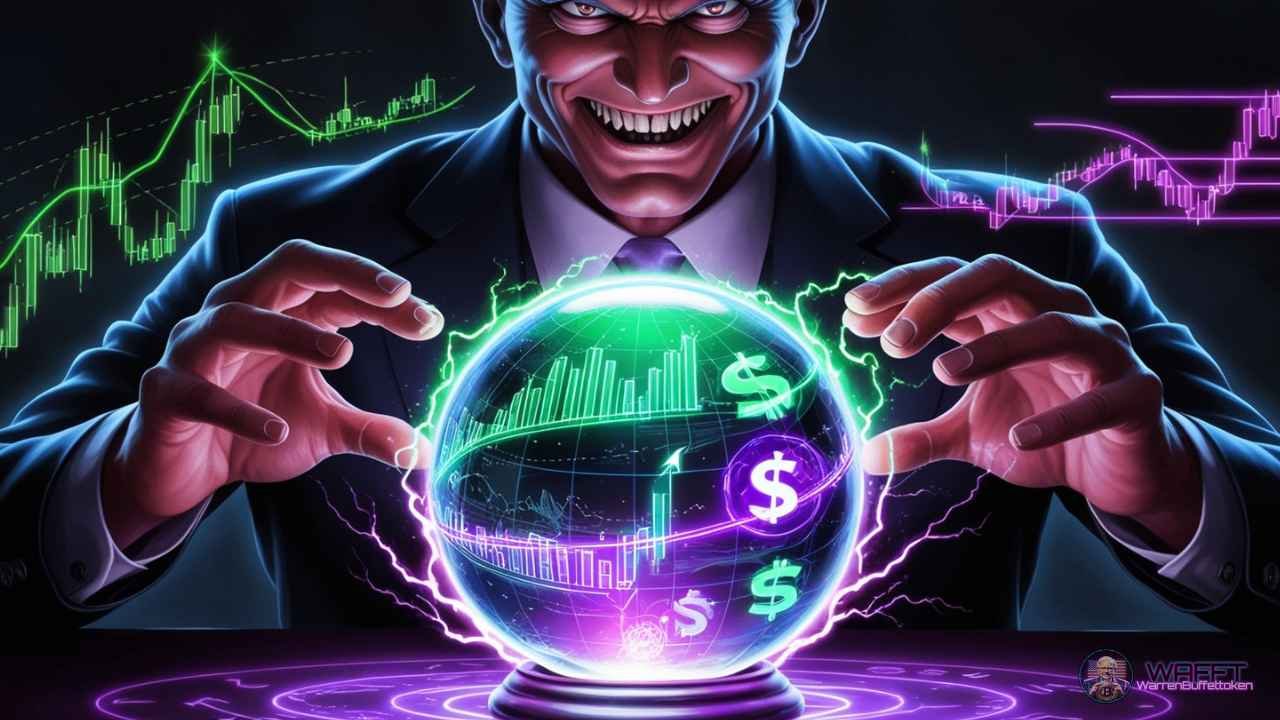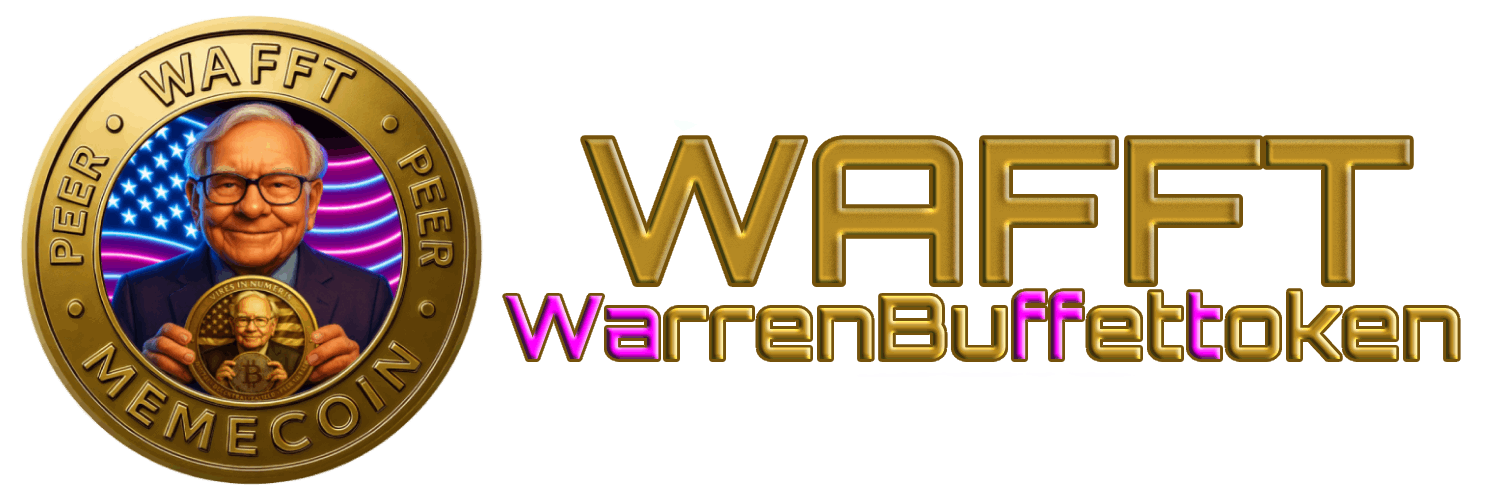Stagflation
When the Economy Stops and Prices Rise 🔥📉

Stagflation is one of those economic terms that sounds complicated, but has a very concrete (and worrying) impact on daily life. It is a combination of economic stagnation and high inflation. How does this nightmarish mix come about?
Let’s break it down in a simple way, so you understand what it means and why it gives economists a headache. Let’s get started! 🚀
What is Stagflation? 📉🔥
Stagflation is a rare and complicated economic phenomenon in which two things happen at the same time: the economy stops growing (or even contracts) 📉 and, at the same time, prices continue to rise 📈🔥, that is, there is inflation. In a normal scenario, when the economy cools down, prices tend to fall due to lower demand; but in stagflation, this does not happen.
This problem puts central banks and governments in a difficult situation ⚖️.
- If they try to curb inflation by raising interest rates, they may make the lack of growth worse 🏦.
- And if they try to stimulate growth by lowering rates or increasing government spending, they could further fuel inflation💸.
Stagflation is feared in economics because it is very difficult to control and generates significant pressure both on consumers, who face high prices 💵, and on workers, who see their purchasing power reduced 💼

In summary:
1. The economy is stagnant (i.e., there is no growth).
2. Prices are rising (high inflation).
3. Unemployment soars 🆘.
In stagflation, problems combine in a kind of economic “trap”: inflation continues to rise while the economy is in crisis. And this makes life very complicated for everyone, from the average citizen to policy makers.
And why does the economy stop growing😑, and why do prices continue to rise🤔? Keep reading⬇️
Common Causes of Stagflation 🔍
Although each episode of stagflation has its particularities, there are some common causes that usually trigger it:
1. Supply Shock (High Costs) 💸
A supply shock occurs when production costs suddenly and sharply increase. A classic example is the rise in oil prices 🛢️, as occurred in the 1970s crisis. As energy costs rise, companies face higher expenses to produce and distribute goods, forcing them to raise prices. This cost inflation occurs as the economy cools, as it becomes more difficult for companies to operate on tight margins.
2. Contradictory Monetary and Fiscal Policies 💼
Sometimes, government policies to stimulate growth can contribute to inflation. For example, if there is an expansionary fiscal policy (such as increasing public spending or reducing taxes) but the central bank keeps interest rates low to stimulate the economy, inflation can result. If supply problems persist or demand is very strong, prices rise, but growth does not fully kick in.
3. Inflationary Expectations 📉🔮
Inflationary expectations also play a role. If people expect prices to continue to rise, workers will demand higher wages and businesses will anticipate higher costs and raise their prices. This creates an inflationary spiral without real economic growth, because money loses value quickly and people stop investing or spending as they did before.
4. External Factors 🌍
Geopolitical tensions, wars, or pandemics can disrupt supply chains and increase the cost of imported goods. This makes final products more expensive for consumers and, at the same time, makes production difficult, which slows growth.
Summary
In stagflation, the economy stagnates because businesses and consumers have less ability to spend or invest, but prices rise due to factors such as high costs or ineffective policies. This combination creates a dilemma for central banks and governments trying to stimulate the economy without exacerbating inflation.

Why is it so hard to fight? 🤔
Stagflation is a tough nut to crack because it has two annoying problems at the same time: a stagnant economy with no growth and prices that keep rising. The typical tools of economists serve to attack either growth or inflation, but rarely both at the same time. So, when stagflation appears, it is as if the usual solutions fall short.
Here’s why:
1. Solutions that step on each other’s heels 🔄
- To fight inflation: Central banks often interest rates rates to get people to spend less, which lowers demand and helps calm prices. But this can also freeze the economy even more… ouch!
- To spice up growth: The opposite, i.e. lowering interest rates or having the government spend more, can boost the economy… but it also fuels inflation. So every time you fix one thing, you screw up the other! 🙃
2. External factors that cannot be controlled 🌐
Stagflation usually starts with a supply shock: suddenly, the price of something essential like oil or food skyrockets, and not because of internal causes, but because somewhere in the world something exploded or someone decided to turn off the tap. 💥 This increase in costs makes everything more expensive without there being greater demand or growth, and the central bank is left with few options to fix the problem.
3. Expectations of more inflation 🔮📉
If people and companies believe that prices will continue to rise, then they start to act accordingly. Companies raise prices and workers ask for raises to compensate for inflation, creating a vicious cycle that keeps stagflation alive. It’s like trying to put out a fire with gasoline! 🔥
4. Social and Political Impact ⚖️
The bad thing is that measures to curb inflation are often unpopular, because they can cut jobs or cause the economy to cool down even more. In a context of stagflation, where the public is already upset by the lack of growth and high prices, these policies can be a “cure worse than the disease” from a political point of view.
5. Public Policies with little room for maneuver 🛠️
To get out of stagflation, several policies are needed that work together, such as structural reforms and well-coordinated fiscal and monetary policies. But that is easier said than done; governments and central banks are faced with limitations that make it difficult to react quickly. The necessary coordination is difficult and, in the meantime, prices and stagnation are still there, like a stone in the shoe.
In Summary
Stagflation is like a maze in which any exit leads you back to the same problem. If you try to curb inflation, growth freezes, and if you try to revive the economy, prices soar again! And if it all started due to external factors, things get even more complicated. Finding the balance is an art… and one of the biggest challenges in economics.
How Stagflation Affects Daily Life? 🏠💸
Stagflation affects daily life in many ways, and not exactly for the better.
Here I explain how it impacts people’s daily lives in several key ways:
1. Constant Price Increase 💸
- Inflation means that the prices of almost everything are going up: food, transportation, services, clothing… practically everything costs more! The difference with normal inflation is that, with stagflation, those prices go up, but incomes do not do so at the same rate or even stagnate. So money goes for less, which forces us to prioritize expenses and reduce the consumption of non-essential things.
2. Salaries that do not grow or lose value 📉
- In a stagnant economy, companies are not growing, and therefore, they have less room to offer salary increases. This means that, even if prices go up, workers’ incomes do not. For most people, it means losing purchasing power, meaning that the same salary can buy less each month.
3. Fewer Jobs and Employment Opportunities 👩💼🔍
- Stagflation also tends to slow down the creation of new jobs. Companies, faced with an uncertain economic outlook and high inflation, tend to be more cautious and cut investments or postpone projects. This translates into fewer hires and, in some cases, layoffs, which affects those looking for work or those who want to change to a better job.
4. Getting into Debt Is More Expensive 💳
- As central banks raise interest rates to try to control inflation, credit and loans become more expensive. For those with debt, especially mortgages or large loans, this can mean higher monthly payments. In addition, those who want to take out a loan for, for example, a business or a house, find less favorable and more expensive conditions.
5. Savings Losing Value 📉💰
- When prices rise and money loses purchasing power, savings lose value as well. Unless they are invested in something that protects against inflation (such as real estate or certain investments), the money saved in the bank becomes devalued, which means that it will be used to buy less in the future.
6. Uncertainty and Financial Stress 😬
- The combination of inflation with a weak labor market creates an environment of uncertainty. Individuals and families feel more pressure to adjust their budgets and watch every expense, which generates stress and affects emotional well-being. The feeling that the economy is not improving and prices are constantly rising can make many people feel insecure about their financial future.
Summary
In short, stagflation squeezes people’s pockets on all fronts: high prices, frozen wages, scarce jobs, expensive debts and declining savings. And all of this has a direct impact on daily life, making it more expensive and stressful.

Can We Avoid Stagflation? 🔮
Avoiding stagflation is complicated, but economists and governments have learned a lot from past episodes (or so it seems🫢). To avoid a stagflation situation, economic policies must be careful and well designed.
Some strategies include:
- Diversifying energy sources: This reduces the risk of supply shocks like the one that occurred in the 1970s. Many economies have moved into alternative energies, such as solar and wind, to become less dependent on oil.
- Prudent Monetary Policies: Avoiding excessive monetary expansion in times of growth helps prevent long-term inflationary pressures.
- Responsible Fiscal Policies: Government spending should remain balanced and aimed at boosting productive sectors rather than simply consuming resources.
A Little History: When did stagflation begin? 🕰️
The term “stagflation” became popular in the 1970s, especially in the United States and the United Kingdom. At that time, the world experienced a strong economic blow when OPEC countries (Organization of Petroleum Exporting Countries) decided to reduce oil production in 1973. This caused the price of crude oil to skyrocket, which is an essential resource for industries and transportation around the world.
The increase in the price of oil caused the prices of practically everything to rise (inflation), and at the same time, companies had to reduce production and employment because costs were too high. Thus, the economy was left in the worst-case scenario: little growth, high unemployment and rising prices. This was one of the first clear episodes of stagflation, and since then economists have been afraid of repeating that experience.
Key Figures and Responses to Stagflation⌛️💰
Stagflation was like that party that no one wanted to go to in the 1970s: high inflation, unemployment, and stagnant economic growth. But don’t worry, here are some of the most prominent figures who put on the superhero cape to face this challenge. Let’s meet them! 🚀
Paul Volcker: The Man Who Raised Rates 📈🦸♂️
Who is he?
Paul Volcker was the chairman of the US Federal Reserve from 1979 to 1987. He was born on September 5, 1927 in Cape May, New Jersey. His mission: to combat the runaway inflation that was ravaging the country.
What did he do?
In 1981, Volcker decided it was time to take drastic measures. He raised interest rates to unprecedented levels, reaching a staggering 20% in June of that year. This was like putting the brakes on a runaway roller coaster 🎢. While this led to a temporary recession (thanks, Paul!), it was also crucial in getting inflation under control and laying the groundwork for an economic recovery in the years that followed.
Milton Friedman: The Guru of Inflation 🧠💡
Who is he?
Milton Friedman, born July 31, 1912 in New York, was an economist who became a central figure in 20th-century economics. Known for his monetarist approach, his ideas were revolutionary.
What did he say?
Friedman proclaimed that “inflation is always and everywhere a monetary phenomenon.” In other words, if you print more money than the economy can handle, boom! Inflation. 💥 During the 1970s, her theories helped explain why stagflation was such a complicated problem. In 1976, she was awarded the Nobel Prize in Economics for her contributions to consumption analysis and monetary theory.
Margaret Thatcher: The Iron Lady Against Stagflation 🇬🇧⚔️
Who is she?
Margaret Thatcher became Prime Minister of the United Kingdom in 1979 and was the first woman to hold this position. She was born on October 13, 1925, in Grantham, England.
What did she do?
Thatcher confronted a faltering economy with bold reforms. She implemented policies that included massive privatizations and a drastic reduction in public spending. Her approach was clear: less state intervention and more free markets. Under her government, inflation rates began to fall and the British economy began to recover by the mid-1980s.
Conclusion: The Battle Against Stagflation 💪🔥
Stagflation was a monumental challenge that tested economists and political leaders alike. Thanks to figures like Volcker, Friedman, and Thatcher, the foundations were laid to understand and combat this phenomenon. Although the decisions taken were difficult and often unpopular, their legacy continues to influence how we manage the economy today.
So you know, if you ever find yourself talking about economics or just want to impress your friends with interesting facts, you have plenty of material! 🥳
Famous Examples of Stagflation in History 🌍
Stagflation is not something exclusive to a single era or region. Although the 1970s is the most famous case, there have been other episodes in different places around the world.
- United States in the 1970s 🇺🇸: As mentioned before, the 1973 oil embargo led to rising prices and economic stagnation.
- United Kingdom 🇬🇧: During the 1970s, the United Kingdom faced a harsh combination of high inflation and low growth, exacerbated by public spending policies that resulted in high deficits.
- Japan in the 1990s 🇯🇵: Although Japan technically experienced a period of low inflation (even deflation) during the “lost years,” its economy experienced prolonged economic stagnation, and although it was not classic stagflation, some elements were similar.
Conclusion: Why is it important to understand stagflation? 📘🧠
Understanding stagflation and its effects is important, as it is one of the most difficult economic situations to manage. The combination of inflation and stagnation is a real challenge for any economy and, when it occurs, it has serious effects on people’s well-being. Knowing how it happens and how it can be dealt with allows us to be better prepared and, perhaps, support policies that avoid these scenarios in the future.
The next time you hear about inflation, recession, or economic growth, you will know that stagflation is a rare but real mix of those elements, and that avoiding it is one of the priorities of economists.


